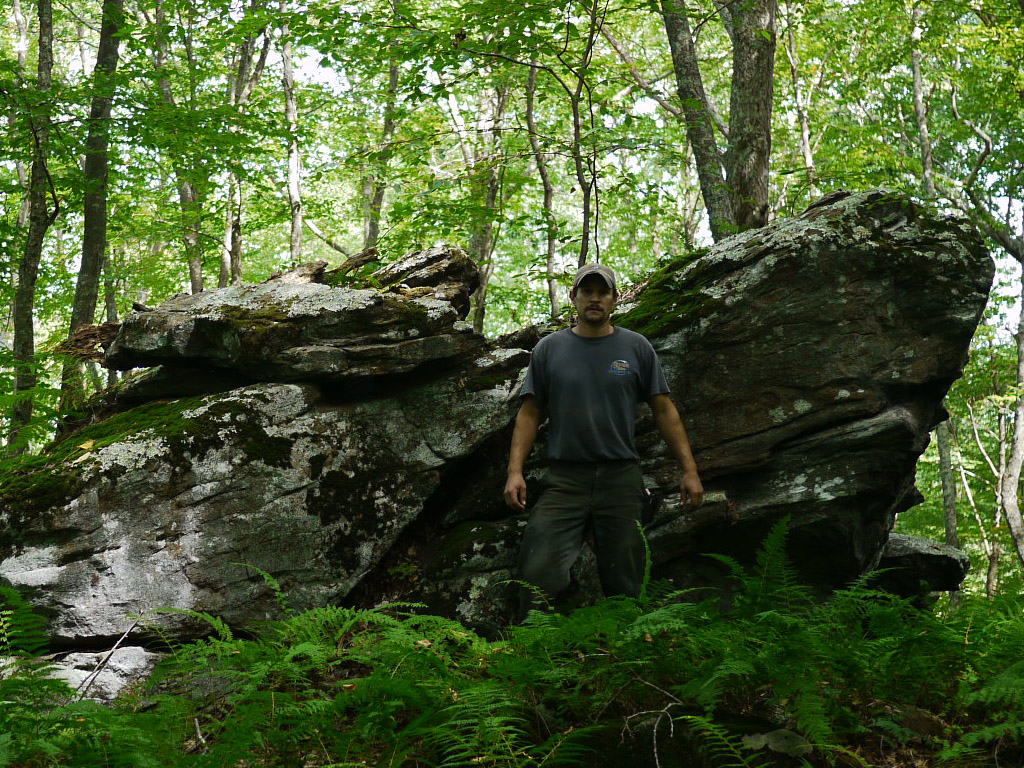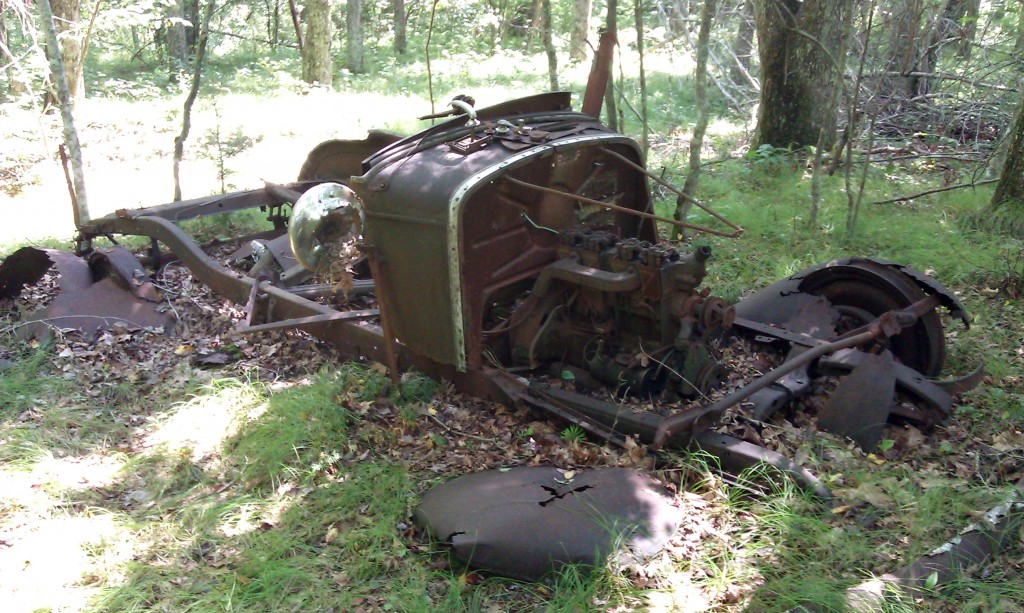On our introductory tour of the I-Park grounds with the owner, Ralph Crispino, we walked by interesting spots for potential portable projection.
However, Mason Carillo is the Grounds Keeper here, and he said he knew a few more remote spots that were less well-known.

Mason was right, and he showed me some amazing areas off the trails. With Mason's help I have numbered the areas where rocks are lying together (the numbering is mine, these areas are not on any maps at I-Park).
I include a few more shots below, but first of all, how we got there. Walking the trails is fine for a leisurely Sunday afternoon, but if you're working the grounds you need to get about quickly. This is where the gator comes in:
It's small enough to navigate the trails but hardy enough to handle steep inclines, declines, and just generally uneven surfaces, and generally quite an experience in it's own right. Mason is out on this thing all the time. Nice job.
In each area where we found rocks there were often several clumped together. In Area #3, they were quite spaced apart. This rock is in the same vicinity as the one at the top of this post:
Some of the rocks are collected together in such a way that the layout almost looks 'designed'.
For example, the rocks in Area #5 are lined up together so that they look like a kind of entrance-way, with a rock precariously balanced at the top to make cubby-hole:
Whether or not these rocks were moved here, it does remind me of one of the recurring themes on this trip. I am told that this land was once intensively cultivated, not so long ago. This forest is second / third growth, a number which refers to the times it has been razed down for farmland and left to grow again.
Connecticut is part of New England, and this area is full of second-growth forest. Settlers from Europe farmed here until eventually much more fertile, flat and spacious land was settled in the Mid-West. The land here was eventually abandoned for the more profitable property West of here.
It's hard to believe when people tell you that - but the evidence is right here in front of us:

It's a Model A Ford, in the middle of the I-Park forest. It would have been driven by farmers in the late 20s / early 30s. It was parked, presumably broken or just abandoned. The forest simply grew up around it.
It's fascinating to me that as wild as it may look here, there isn't a patch of land that hasn't been completely altered, transformed; that doesn't somehow owe it's entire current state of existence to some previous large-scale intervention by human hands.